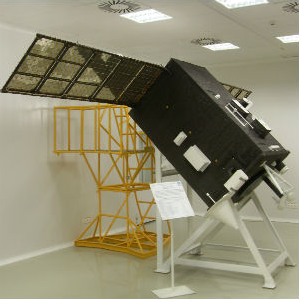
A small spacecraft “Aist-2D”, developed by the scientists of Samara State Aerospace University (SSAU) and the experts of the Rocket and Space Centre “Progress” will “see” from outer space what is hidden under the thick top of trees and below the Earth's surface.
The radar equipment was installed on “Aist-2D”, which was delivered to the space launcher complex Vostochniy on January 22. It will allow the scientists to work out the possibility of observation from space is not only the visible surfaces but also the subsurface as well as the structures and objects camouflaged by plants. Monitoring will be performed through the active Earth's location in the new P-band frequency. The locator was developed in the Volga State University of Telecommunications and Informatics (PSUTI).
“The radar on board, working in conjunction with ground-based equipment, allows you to observe various objects on the Earth's surface, the objects that are covered by the leaves or other plants with a spatial resolution of up to 5 meters. The depth of penetration below the Earth’s surface is much greater than the current radar in orbit and depends on the soil moisture and structure. It ranges from a few tens of centimetres in the usual soil up to tens of meters in the desert. It’s impossible to find deeply buried treasures, but we will see what is hidden in the forest”, - said Oleg Goryachkin. Head of PSUTI Department of Theoretical Bases of Radio Engineering and Communication.
So far, the radar on “Aist-2D” depends on downlink points. But the scientists hope to work out a new technology of remote sensing of the Earth with its help, to create an independent from downlink points (monostatic) space radar with better resolution in the future.
The available radar can create current radar images of the area several times a day within a radius of 20 km around a stationary downlink point. These images will help to control agricultural facilities in favour of precision farming, to monitor changes in the area for the benefit of various departments, to obtain a topographic map and monitor its changes up to several centimetres. Tomography of the Earth's ionosphere will also be carried out.
According to the scientists, this radar installed in “Aist-2D” is unique up to date. “There isn’t such equipment in the world yet. Monostatic P-band frequency radar with a resolution of 30 meters BIOSAR P-Band is scheduled to launch by the European Space Agency in 2020”, - noted Goryachkin.
In total there are 8 types of scientific hardware installed in the “Aist-2D”, six of which are designed and manufactured in SSAU. Samara University scientists intend to investigate the impact of space environment factors on different electronic components, to examine images degrading in spacecraft superficial elements, to conduct experiments on registration of micrometeorites and space debris in the near-Earth environment.
It is scheduled to put the small spacecraft “Aist-2D” into orbit during the first launch campaign from the space launcher complex “Vostochniy” by the carrier rocket “Soyuz-2-1A” together with the spacecraft for scientific purposes “Lomonosov” and the nanosatellite “SamSat-218”.
Source: ria.ru









